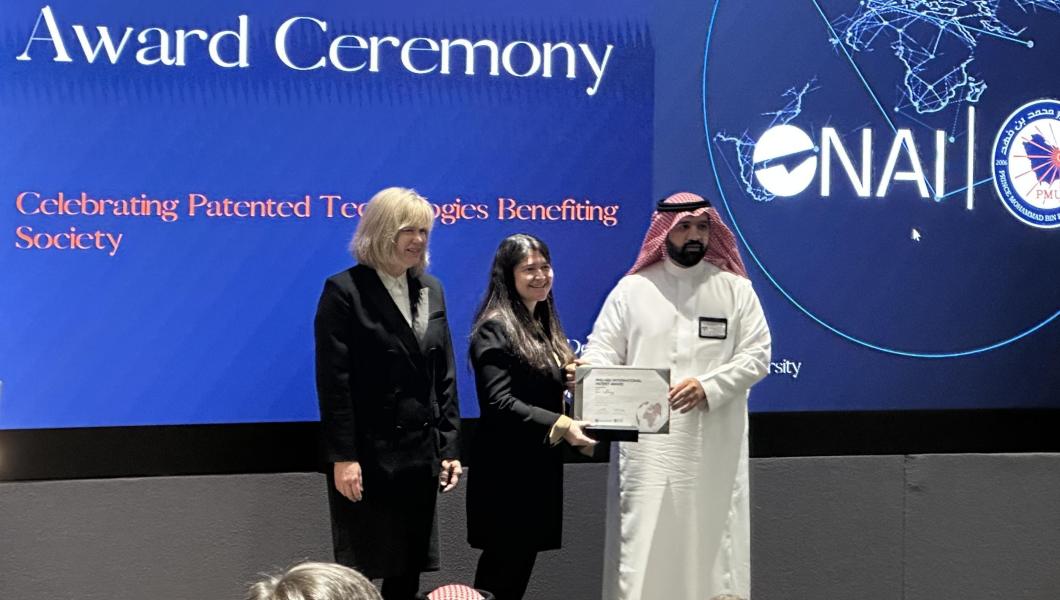Hamilton Hospital Employs Mobile Medical Care Units Developed by NJIT and Collaborators

Partnering with New Jersey Institute of Technology (NJIT) and The Tuchman Foundation, Robert Wood Johnson University Hospital (RWJUH) Hamilton has established a freestanding COVID-19 testing center on its campus that was fashioned from four 40-foot-long, repurposed shipping containers.
The new facility has allowed the hospital to conduct its entire testing operation, from registration to test, in one location, while keeping symptomatic and asymptomatic patients separate and outside of the hospital itself. Prior to its installation, RWJUH performed COVID-19 testing at separate sites for its pre-admission and occupational health communities.
“We have been able to streamline the testing process, while maintaining safety protocols,” said Tracie Brennan, R.N., the hospital’s testing coordinator. When patients arrive at the facility, they call from their car to alert the staff of their arrival. They are then brought into the unit as space allows, assuring appropriate social distancing.
“Asymptomatic people receive tests inside the units,” she added. “There is a separate drive-through operation on the back side of the units for symptomatic patients who never have to enter them.”
The modules, which were fabricated in Woodbridge, N.J., were installed on the hospital campus last November and testing began in mid-January. Staff there say there are now averaging between 45 and 60 tests a day and plan to add more time slots for corporate clients.
The original prototype was developed last year by NJIT, University Hospital in Newark and The Tuchman Foundation in response to the extreme challenges to clinical capacity posed by the COVID-19 pandemic. The modular, mobile medical care units (M2CU) can be deployed to areas of surging disease outbreaks and other disasters, as well as to regions that lack health care infrastructure. As shipping containers, they can travel nationally and internationally within the existing commercial intermodal networks.
“All of these units are standard and can be moved to a particular area when there is an urgent need. They can be sent to any place in the United States, Canada and Mexico in a matter of days. For example, in areas where the hospital system is overwhelmed, rather than shipping patients out of the affected area, we can ship containers into the area to meet the needs of the patient population,” noted Martin Tuchman, CEO of the Tuchman Group and chairman of The Tuchman Foundation, who is a member of RWJUH’s Board of Directors. The foundation, a nonprofit corporation that supports research on health care, including diseases and cures, provided initial funding to develop the prototype.
The units include customizable internal environments that can be configured for various medical applications, including clinical point-of-care services and the testing and treatment of communicable and non-communicable diseases. They are easily transportable for rapid deployment and can be staged horizontally to create larger clinical field operations sites with effective patient separation and management.
The original two-unit prototype was designed and constructed last July, and assessed for its effectiveness as a triage center in a series of staged patient-care simulations conducted by medical personnel at University Hospital in Newark. NJIT now uses it as the university’s centralized COVID-19 testing center.
With four interconnected shipping containers, the M2CU built for RWJ is 33% larger than the NJIT complex.
“Taking into account testing and potential future use for vaccine administration with correct social distancing, we decided that two was not enough,” said Joan Bercari, RWJUH Hamilton’s vice president for quality and safety, who said she envisions testing as many as 100 people per day.
“The increased size has allowed RWJUH to maximize utility by creating concurrent patient workflows,” noted Steven Rubin, the project manager and an adviser to The Tuchman Foundation who has worked in the intermodal and container shipping logistics sectors for three decades. “We have also tested mobile generators to power the units, which worked well, and this has allowed us to further prove the mobility and adaptability of the M2CU.”
The hospital had initially planned to conduct further studies of the units to determine how best to use them, said Robert Field, Jr., the hospital’s assistant vice president for support services, safety and security.
“But we decided that it would benefit us to use them for true patient care, such as testing,” he added.
“This pandemic has challenged emergency healthcare systems and patient management capacity globally. But it has also emphasized the critical importance of distributed health care facilities in resource-constrained environments in both urban and rural areas,” said Atam Dhawan, senior vice provost for research at NJIT. “The mobile medical care units can be reconfigured and adapted to deliver a variety of medical needs to augment facilities at hospitals and nursing homes. They can also function independently in communities lacking these facilities.”
